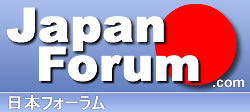
 |
MIT has a ton of course material online for 1800 of their courses, and that includes Japanese ^_^
Here's a link to the study material for the Beginning Japanese 1 class: MIT OpenCourseWare | Foreign Languages and Literatures | 21F.501 Beginning Japanese I, Fall 2004 | Study Materials For some reason, the pictures/text for the Japanese doesn't work on my comp, but if you go to the page for the individual character and click on the picture icon, you get a movie of someone drawing it w/ the right stroke order. Anyway, it's a place to start. By the way, the book I used was Japanese The Written Language (JWL) by Professor Eleanor Jorden and Mari Noda. I thought it was pretty good^_^ We had the "Field Test Edition" so it had a few mistakes, but the real edition is out now and I expect it's quite a good book. |
I want to see your NAKAMA very much.
the textbook we are using is 1990 version. it's too old and you cant find words like oshare. It explains grammar well ...In fact good textb. |
Quote:
|
Thank u.
I really want to see it. Is there a e-book version? Our textbook becomes difficult now, for it is Advanced Japanese. Now i am learnin japanese grammar that is written in English. It is interesting to read japanese textbook in English version. -------------------------------------------------------------- so, i am expectin Nakama. Yoroshiku onegaishimasu... |
i use a program called befor you know it, its free to download. i also downloaded al the lists that are on the internet of byki and i got katakana and hiragana. very simpel software that works pretty well. you learn to read and write it.
|
i'm using a book by a company called "tuttle"^^ it's working real good!
also, the website called nihongonaru is really great and helps a super bunch! good luck! |
I think my way was most fun. Just print out a basic list with both hiragana and roumanji, and get like a manga or something in Japanese and just translate the whole book by looking at the chart.
Like. にっぽんはいちばんてす。 Then refer to your chart. Nippon wa ichiban desu. And then if you want you can translate it(or if you can, some phrases are harder than others). Japan is the best. It's best to use manga cause they come only in Kana, although the Katakana is there, it's pretty insubstantial. You can also just write out a chart again and again until you get it lodged in your noggin. I'm a fan or repitition. |
Quote:
|
All you need is a basic hiragana chart. Anything more than that is unnecessary. Since it sounds like you already have a book, study more from it. I write in all hiragana/katakana/kanji just a fluent and fast as I write English letters just because I practice writing them so often. Just reading and studying them is going to do you no good.
I learned hiragana and katakana within a month by taking a Japanese book/manga and writing down the romaji on a piece of paper. Then I would put the book away, look at the romaji, and on another sheet of paper write all the romaji back into hiragana. It gets your mind working both ways and gets your hand practicing the characters. If you're having a hard to remembering and you need little clues to help you out ( for instance, the character 'ki' (き) looks like a key.) There's a pretty nifty book that has hints like that, along with boxes to practice your writing in. I know it sounds very elementary, but I teach fifth graders Japanese and that's what I use: 'Kana Can Be Easy'. Good luck with learning your characters! |
Quote:
|
| All times are GMT. The time now is 05:30 PM. |